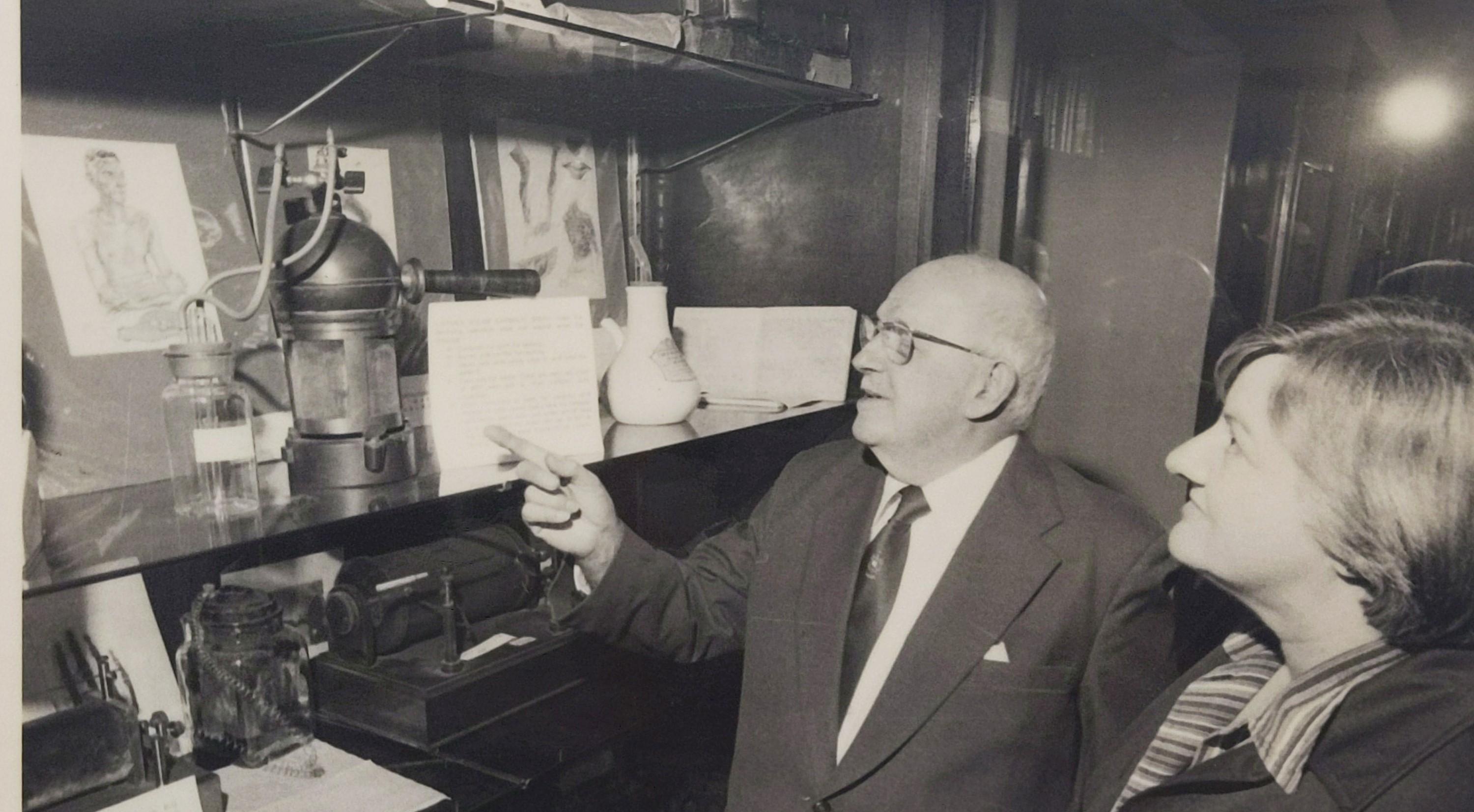The Faculty of Medicine is the proud custodian of one of Australia’s finest collections of medical material heritage: the Marks-Hirschfeld Museum of Medical History.
Through a diverse collection of instruments, photographs, books, personal effects and artworks, the Museum tells the rich history of medicine in Queensland: its practice, innovation, triumphs and its people. The Museum collection holds upwards of 5000 objects, all carefully catalogued, conserved, researched and administered by a curator and team of dedicated volunteers.

Our more significant areas of collection include surgery, obstetrics and gynaecology, anaesthesiology, pharmacy, ophthalmology, general practice, dentistry, paediatrics, orthopaedics, medical imaging, pathology, public health, medical education, alternative medicine, military medicine, medical art, biography and Faculty history.
The Museum collection can trace its origins to an exhibition of historical medicine at the Australasian Medical Congress of 1950 in Brisbane. After the congress, many of the exhibition items were donated to The University of Queensland and now make up the Marks-Hirschfeld Museum’s foundation collection.
A significant component of the donation came from the personal collection of leading Queensland medical identity Dr Alexander Hammett Marks. Dr Konrad Hirschfeld was a pioneering chest surgeon in Brisbane and the Museum’s first curator. Together, their contributions are honoured in the name of the Marks-Hirschfeld Museum.
The Museum is home to some valuable and unique items of medical and historical significance. The collection includes the first x-ray machine in Queensland, one of Lord Lister’s carbolic sprays used for antisepsis during surgery, a pioneering respirator for twins from 1947, mechanical leeches, a field stretcher from World War I, a copy of James’ 18th century Medicinal Dictionary and several early models of the sphygmograph, mid-19th century devices made up of levers and weights to chart the strength of the pulse.
